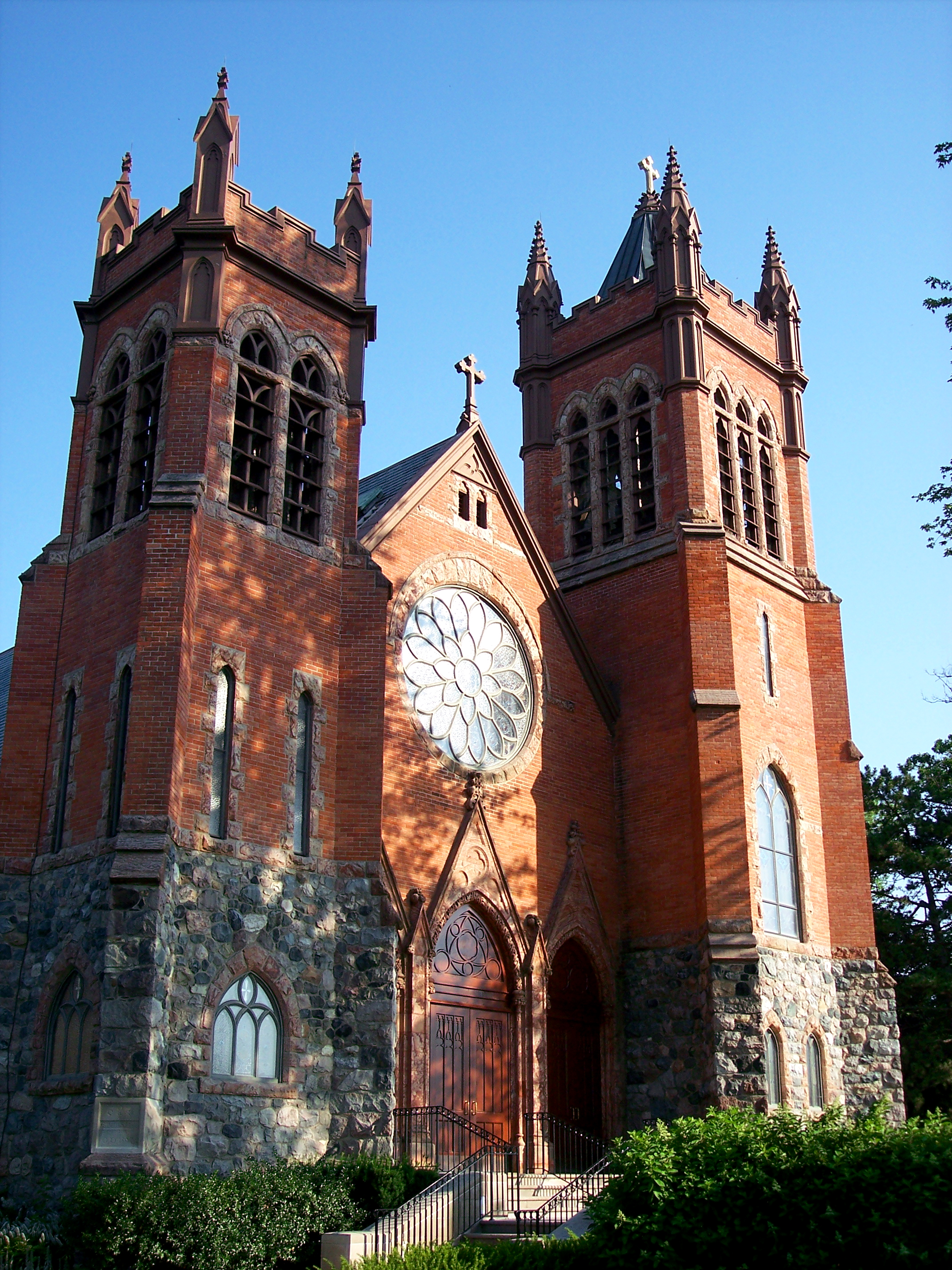|
Muskrat French
The Muskrat French (; also known as Mushrat French or Detroit River French Canadien) are a cultural group and dialect found primarily in southeastern Michigan along the Detroit River and Lake St. Clair, the western and southern shores of Lake Erie from Monroe County, Michigan to Sandusky, Ohio, and in southwestern Ontario. This unique subculture is characterized by its historical roots in the French Canadian fur trade, its distinctive culinary traditions, and a regional French dialect. The name "Muskrat French" derives from the tradition of eating muskrat, particularly during Lent, a practice tied to a historical Catholic dispensation. History and Origins Early French Settlement and the Fur Trade The Muskrat French trace their origins to the early French settlers, habitants, voyageurs, and coureurs des bois who arrived in the Detroit River region in the late 17th and early 18th centuries as part of New France’s expansion. Detroit, founded in 1701 by Antoine de la Mothe Ca ... [...More Info...] [...Related Items...] OR: [Wikipedia] [Google] [Baidu] |
Metro Detroit
Metro Detroit is a major metropolitan area in the U.S. state of Michigan, consisting of the city of Detroit and over 200 municipalities in the Southeast Michigan, surrounding area. There are varied definitions of the area, including the official statistical areas designated by the Office of Management and Budget, a federal agency of the United States. Metro Detroit is known for its automotive heritage, arts, entertainment, popular music, food, cultural diversity, and sports. The area includes a variety of natural landscapes, parks, and beaches, with a recreational coastline linking the Great Lakes. Metro Detroit also has one of the largest metropolitan economies in the U.S. with 17 Fortune 500, ''Fortune'' 500 companies. Definitions The Detroit Urban Area, which serves as the metropolitan area's core, ranks as the List of United States urban areas, 12th most populous in the United States, with a population of 3,776,890 as of the 2020 United States census, 2020 census and an ... [...More Info...] [...Related Items...] OR: [Wikipedia] [Google] [Baidu] |
Voyageurs
Voyageurs (; ) were 18th- and 19th-century French and later French Canadians and others who transported furs by canoe at the peak of the North American fur trade. The emblematic meaning of the term applies to places (New France, including the and the ) and times where that transportation was over long distances, giving rise to folklore and music that celebrated voyageurs' strength and endurance. They traversed and explored many regions in what is now Canada and the United States. Despite their fame, their lives were arduous and not nearly as glamorous as folk tales made out. For example, they had to be able to carry two bundles of fur over portages. Some carried four or five, and there is a report of a voyageur carrying seven bundles for half a mile.Mike Hillman, "La Bonga: The Greatest Voyageur" Boundary Waters Journal Magazine, Summer 2010 Issue, pp 20–25 Hernias were common and frequently caused death. Most voyageurs started working in their early twenties and continued w ... [...More Info...] [...Related Items...] OR: [Wikipedia] [Google] [Baidu] |
Grosse Pointe
Grosse Pointe is a group of five adjacent suburbs in the Metro Detroit, Detroit metropolitan area on the shore of Lake St. Clair. From southwest to northeast, they are: *Grosse Pointe Park, Michigan, Grosse Pointe Park *Grosse Pointe, Michigan, Grosse Pointe *Grosse Pointe Farms, Michigan, Grosse Pointe Farms *Grosse Pointe Shores, Michigan, Grosse Pointe Shores (incorporated in 2009 from the remnants of two townships: Grosse Pointe Township, Michigan, Grosse Pointe Township in Wayne County, Michigan, Wayne County and Lake Township, Macomb County, Michigan, Lake Township in Macomb County, Michigan, Macomb County) *Grosse Pointe Woods, Michigan, Grosse Pointe Woods The terms "Grosse Pointe" or "the Pointes" are ordinarily used to refer to the entire area, referencing all five individual communities, with a total population of about 46,000. The Grosse Pointes altogether are 10.4 square miles, bordered by Detroit on the south and west, Lake Saint Clair (North America), Lake St. C ... [...More Info...] [...Related Items...] OR: [Wikipedia] [Google] [Baidu] |
Ecorse, Michigan
Ecorse ( ') is a city in Wayne County in the U.S. state of Michigan. The population was 9,305 at the 2020 census. Ecorse is part of the Downriver community within Metro Detroit. The city shares a northwestern border with the city of Detroit and also borders the cities of Lincoln Park to the west, River Rouge to the north, and Wyandotte to the south. The city shares its name with the Ecorse River, which forms its southern border with Wyandotte. The Detroit River forms the city's eastern border as part of the Canada–United States border with LaSalle, Ontario. Etymology Native American tribes of this area used this area as a burial ground. When French colonists settled here in the last two decades of the 18th century, they named the waterway ''"Rivière Aux Échorches",'' which means "The River of the Barks" in English."The History of ... [...More Info...] [...Related Items...] OR: [Wikipedia] [Google] [Baidu] |
Monroe, Michigan
Monroe is the largest city in Monroe County, Michigan, United States, and its county seat. The population was 20,462 at the 2020 census. The city is bordered on the south by Monroe Charter Township, but the two are administered autonomously. Monroe is the core city in the Monroe metropolitan area, which is coterminous with Monroe County and had a population of 154,809 in 2020. Located on the western shores of Lake Erie approximately northeast of Toledo, Ohio, and southwest of Detroit, the city is part of the Detroit–Ann Arbor–Flint combined statistical area. The Monroe area was the scene of several military conflicts during the War of 1812 against the United Kingdom and is known for the Battle of Frenchtown. In 1817, portions of the Frenchtown settlement along the River Raisin were platted and renamed "Monroe" after then-president James Monroe. When Michigan became a state in 1837, Monroe was incorporated as a city. Monroe is known as the childhood residence of Geo ... [...More Info...] [...Related Items...] OR: [Wikipedia] [Google] [Baidu] |
Métis
The Métis ( , , , ) are a mixed-race Indigenous people whose historical homelands include Canada's three Prairie Provinces extending into parts of Ontario, British Columbia, the Northwest Territories and the northwest United States. They have a shared history and culture, deriving from specific mixed European (primarily French, Scottish, and English) and Indigenous ancestry (primarily Cree with strong kinship to Cree people and communities), which became distinct through ethnogenesis by the mid-18th century, during the early years of the North American fur trade. In Canada, the Métis, with a population of 624,220 as of 2021, are one of three legally recognized Indigenous peoples in the '' Constitution Act, 1982'', along with the First Nations and Inuit. The term ''Métis'' (uppercase 'M') typically refers to the specific community of people defined as the Métis Nation, which originated largely in the Red River Valley and organized politically in the 19th century, radia ... [...More Info...] [...Related Items...] OR: [Wikipedia] [Google] [Baidu] |
Marriage à La Façon Du Pays
Marriage (; "according to the custom of the country") refers to the practice of common-law marriage between European fur traders and aboriginal or Métis women in the North American fur trade. The practice persisted from the early 17th century until the late 19th century. It has been suggested that it fell out of practice due to increasing pressures of Catholic ideology and a growing population of non-indigenous women including the new generation of " mixed-breed" daughters who eventually replaced their native mothers as fur traders' wives. Rituals surrounding the marriages were based on a mix of European and, predominantly, Indigenous customs. The presence of women in the factories (i.e. trading posts) of what is now Canada had been banned by the Hudson's Bay Company as early as 1683. Intermarriage was common from the start of the fur trade and by 1739 the company overturned its ban. The practice was both a social and a political institution, securing trade relations between Eur ... [...More Info...] [...Related Items...] OR: [Wikipedia] [Google] [Baidu] |
Potawatomi
The Potawatomi (), also spelled Pottawatomi and Pottawatomie (among many variations), are a Native American tribe of the Great Plains, upper Mississippi River, and western Great Lakes region. They traditionally speak the Potawatomi language, a member of the Algonquian family. They are additionally First Nations in Canada. The Potawatomi call themselves ''Neshnabé'', a cognate of the word ''Anishinaabe''. The Potawatomi are part of a long-term alliance, called the Council of Three Fires, with the Ojibwe and Odawa (Ottawa). In the Council of Three Fires, the Potawatomi are considered the "youngest brother". Their people are referred to in this context as ''Bodéwadmi'', a name that means "keepers of the fire" and refers to the council fire of three peoples. In the 19th century, some bands of Potawatomi were pushed to the west by European/American encroachment. In the 1830s the federal government removed most from their lands east of the Mississippi River to Indian Territo ... [...More Info...] [...Related Items...] OR: [Wikipedia] [Google] [Baidu] |
Odawa
The Odawa (also Ottawa or Odaawaa ) are an Indigenous North American people who primarily inhabit land in the Eastern Woodlands region, now in jurisdictions of the northeastern United States and southeastern Canada. Their territory long preceded the creation of the current border between the two countries in the 18th and 19th centuries. Their peoples are federally recognized as Native American tribes in the United States and have numerous recognized First Nations bands in Canada. They are one of the Anishinaabeg, related to but distinct from the Ojibwe and Potawatomi peoples. After migrating from the East Coast in ancient times, they settled on Manitoulin Island, near the northern shores of Lake Huron, and the Bruce Peninsula in the present-day province of Ontario, Canada. They considered this their original homeland. After the 17th century, they also settled along the Ottawa River, and in what became the present-day states of Michigan and Wisconsin. They also occupied ot ... [...More Info...] [...Related Items...] OR: [Wikipedia] [Google] [Baidu] |
Wyandot People
The Wyandot people (also Wyandotte, Wendat, Waⁿdát, or Huron) are an Indigenous people of the Northeastern Woodlands of the present-day United States and Canada. Their Wyandot language belongs to the Iroquoian languages, Iroquoian language family. In Canada, the Huron-Wendat Nation has two First Nations in Canada, First Nations Indian reserve, reserves at Wendake, Quebec. In the United States, the Wyandotte Nation is a federally recognized tribe headquartered in Wyandotte, Oklahoma. There are also List of organizations that self-identify as Native American tribes, organizations that self-identify as Wyandot. The Wendat emerged as a confederacy of five nations in the St. Lawrence River Valley, especially in Southern Ontario, including the north shore of Lake Ontario. Their original homeland extended to the Georgian Bay of Lake Huron and Lake Simcoe in Ontario, Canada and occupied territory around the western part of the lake. The Wyandotte Nation (the U.S. Tribe) descends f ... [...More Info...] [...Related Items...] OR: [Wikipedia] [Google] [Baidu] |
North American Fur Trade
The North American fur trade is the (typically) historical Fur trade, commercial trade of furs and other goods in North America, beginning in the eastern provinces of French Canada and the northeastern Thirteen Colonies, American colonies (soon-to-be northeastern United States). The trade was initiated mainly through French, Dutch and English settlers and explorers in collaboration with various Indigenous peoples of the Americas, First Nations tribes of the region, such as the Huron tribe, Wyandot-Huron and the Iroquois; ultimately, the fur trade's financial and cultural benefits would see the operation quickly expanding coast-to-coast and into more of the continental United States and Alaska. Competition in the trade especially for the European market, led to various wars among indigenous peoples aided by various European colonial allies. Europeans began their participation in the North American fur trade from the initial period of their European colonization of the Americas, c ... [...More Info...] [...Related Items...] OR: [Wikipedia] [Google] [Baidu] |








